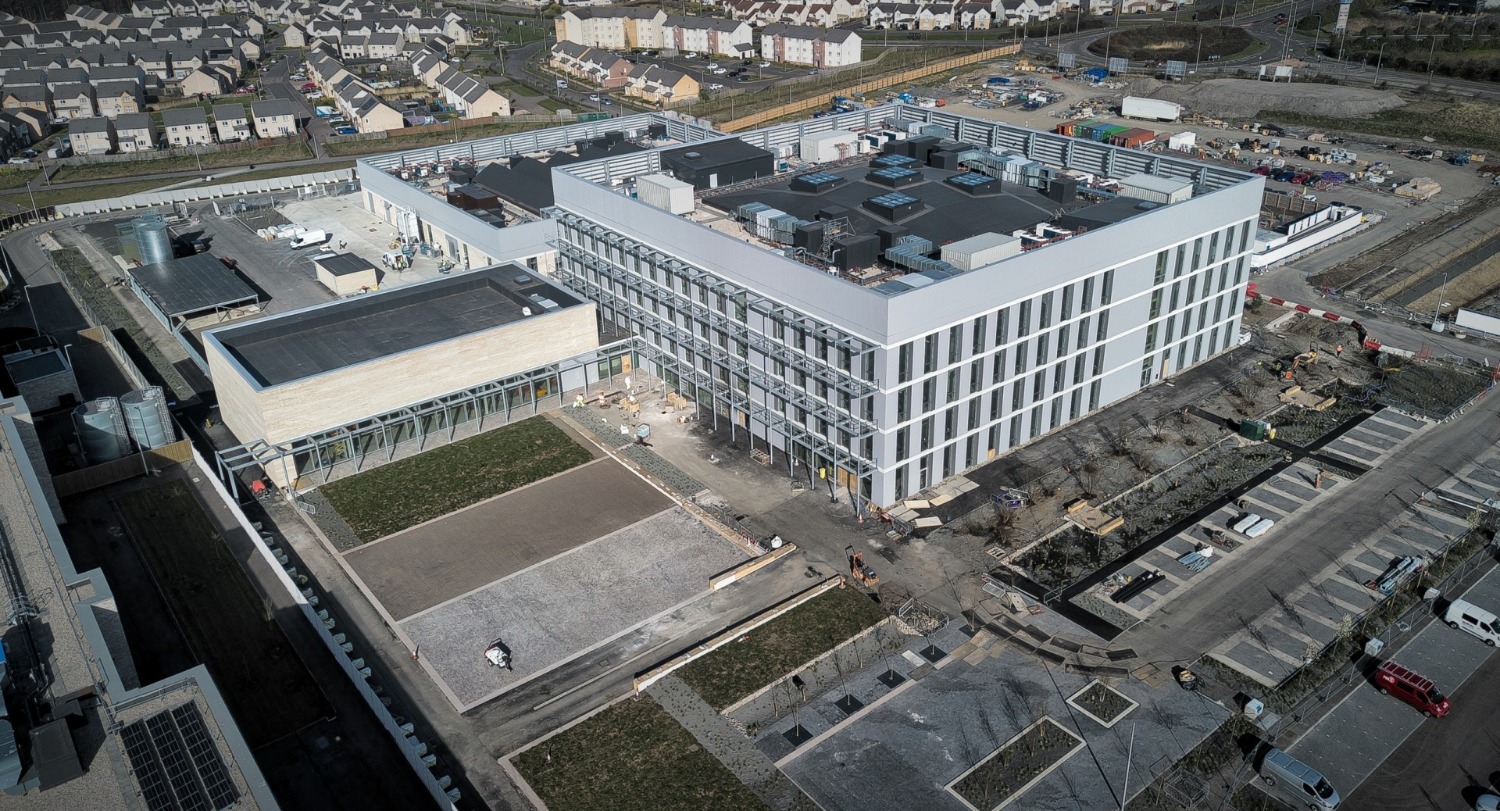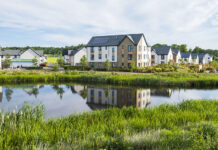
FIFE College’s new Dunfermline City Campus has passed an independent verification of the embodied and whole-life carbon assessments for the three new buildings on the campus.
Due to open later this year, the facility will be the first net-zero ready tertiary education building in Scotland.
The campus has delivered an embodied carbon footprint of just over 560kg CO2e/m2 for the Teaching Building and a total embodied carbon footprint of 601kg Co2e/m2 for the three buildings, which are part of the campus development.
The project’s initial embodied carbon target was 650kg CO2e/m2, and all project partners, including Reiach and Hall, A10, Woolgar Hunter, Horner and McLellan, Balfour Beatty, and their specialist supply chain worked collaboratively to achieve this result, the college said.
Sustainability has been an ‘integral’ part to the Dunfermline City Campus from the outset, with ‘cutting-edge’ construction techniques used to significantly reduce embodied carbon emissions.
Key sustainability design measures at the new campus have included the replacement of concrete floor slabs with cross laminated timber (CLT) planks and green Delta Beams, fabricated from 95% recycled steel. The combination of CLT and recycled steel has enabled a lighter structural design, reducing the volume of concrete required for both the superstructure and foundations. The result has been a reduction of approximately 20% of the typical embodied carbon expected in a development of this size.
As a Race to Zero signatory, Fife College said it is committed to addressing all aspects of carbon emissions at pace, ensuring that its efforts align with the 1.5°C global warming limit set by the Intergovernmental Panel on Climate Change (IPCC). The college’s new campus is a key step in fulfilling this commitment, showcasing how the education sector can lead in climate action, it added.
Jim Metcalfe, Fife College principal, said, “Throughout the construction of our new Dunfermline City Campus, Scotland’s first net-zero ready tertiary education building, we have been fully committed to the latest low-energy and net-zero processes.
“The innovative design of this campus has been a core part of this commitment, and we are immensely proud to have not only met but exceeded our carbon targets.
“As a Race to Zero signatory, Fife College is dedicated to taking meaningful action on all aspects of carbon emissions, ensuring that we contribute to the global effort to stay within the 1.5°C warming limit. This project is a major milestone in that journey, demonstrating how educational institutions can lead by example.
“As we prepare to open the doors later this year, we are thrilled to welcome students to this state-of-the-art learning environment, where they will be part of an innovative space designed for growth and success.”
Stewart MacPhail, project director for Balfour Beatty, commented, “Close collaboration with Fife College, the design teams, and our supply chain has been key to delivering the industry-leading carbon performance achieved in the Teaching Building.
“The successful external verification gives us confidence in the accuracy and integrity of our carbon figures and reinforces what can be achieved through innovation and partnership.”
Jamie Goth, Associate Director – Net Zero for Scottish Futures Trust, added, “We are delighted to see this milestone for one of our pathfinder projects. Fife College’s Dunfermline City Campus is the first of the pathfinder projects to undertake and confirm external verification of objectives 2 and 4 of the Standard.
“The Scottish Government’s Net Zero Public Sector Buildings Standard is a voluntary standard and is applicable across all new, or major refurbishment construction projects. It aims to support public bodies to meet their net-zero commitments.”
Beyond reducing embodied carbon, the construction process has embraced several other pioneering sustainability initiatives. For example, Balfour Beatty, in collaboration with Whitecroft Lighting, introduced Geopak at the site, a reusable packaging system that eliminates single-use plastic and cardboard waste from lighting deliveries – removing an estimated two tonnes of packaging waste over the project.
The project also utilised off-site fabrication for several mechanical and electrical components of the building, which minimised excess materials and decreased the onsite labour needed for system installation.











